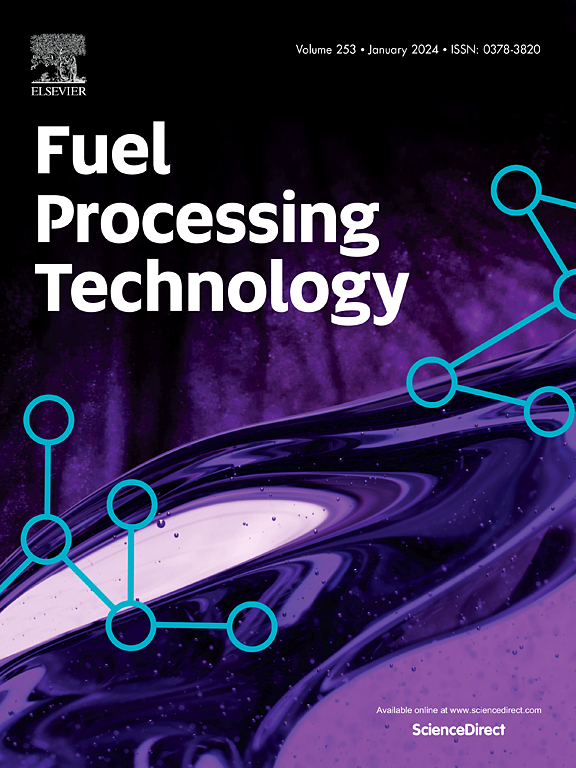Differences in pyrolysis behavior and volatiles of tar-rich coal with various origins
IF 7.2
2区 工程技术
Q1 CHEMISTRY, APPLIED
引用次数: 0
Abstract
Abundant in northwest China, tar-rich coal exhibits significantly diverse pyrolysis behaviors depending on its origins. For low-temperature pyrolysis experiments, three coal-forming environments were selected: limno-telmatic (Sample S-1), wet forest swamp (Sample O-1), and dry forest swamp (Sample O-2). The pyrolysis behavior and the molecular structure evolution were analyzed through thermogravimetric, Fourier transform infrared spectroscopy, gas chromatography, and gas chromatography-mass spectrometer. The findings revealed three stages of pyrolysis behavior in tar-rich coal. Compared to others, S-1, formed in a stronger reducing environment, had a 17 °C lower initial pyrolysis temperature, a 5 °C lower peak reaction temperature, and a 20 % higher weight loss. The reason for S-1 had more bonds with lower energies, accounting for 76 % of the total fragmented bonds, which was 10 % higher than others. Moreover, S-1 contained more highly reactive molecular structures and exhibited higher thermal decomposition. The variations in molecular structure and pyrolysis behavior were reflected in the pyrolysis products, with S-1 showing higher yields of tar, gas, and water, but lower semi-coke. Specifically, it had 2 % higher aliphatics and aromatics and 4 % fewer oxygenated compounds, along with higher levels of CO and CO2, and lower amounts of H2, CH4, and CnHm in volatiles.
不同产地富焦油煤热解行为及挥发物的差异
富焦油煤富集于中国西北地区,其热解行为因产地不同而有显著差异。低温热解实验选择3种成煤环境:limno-telmatic (Sample S-1)、潮湿森林沼泽(Sample O-1)和干燥森林沼泽(Sample O-2)。采用热重法、傅里叶红外光谱法、气相色谱法、气相色谱-质谱联用仪对热解行为和分子结构演化进行了分析。研究结果揭示了富焦油煤热解行为的三个阶段。S-1在较强还原环境下形成,初始热解温度低17℃,反应峰温度低5℃,失重率高20%。S-1的化学键能量较低,占断裂键总数的76%,比其他化学键高10个百分点。此外,S-1含有更多的高活性分子结构,具有更高的热分解性能。分子结构和热解行为的变化反映在热解产物中,S-1的焦油、气体和水的产率较高,但半焦的产率较低。具体来说,它的脂肪族和芳烃含量增加了2%,含氧化合物含量减少了4%,同时挥发物中的CO和CO2含量增加了,H2、CH4和CnHm含量减少了。
本文章由计算机程序翻译,如有差异,请以英文原文为准。
求助全文
约1分钟内获得全文
求助全文
来源期刊

Fuel Processing Technology
工程技术-工程:化工
CiteScore
13.20
自引率
9.30%
发文量
398
审稿时长
26 days
期刊介绍:
Fuel Processing Technology (FPT) deals with the scientific and technological aspects of converting fossil and renewable resources to clean fuels, value-added chemicals, fuel-related advanced carbon materials and by-products. In addition to the traditional non-nuclear fossil fuels, biomass and wastes, papers on the integration of renewables such as solar and wind energy and energy storage into the fuel processing processes, as well as papers on the production and conversion of non-carbon-containing fuels such as hydrogen and ammonia, are also welcome. While chemical conversion is emphasized, papers on advanced physical conversion processes are also considered for publication in FPT. Papers on the fundamental aspects of fuel structure and properties will also be considered.
 求助内容:
求助内容: 应助结果提醒方式:
应助结果提醒方式:


